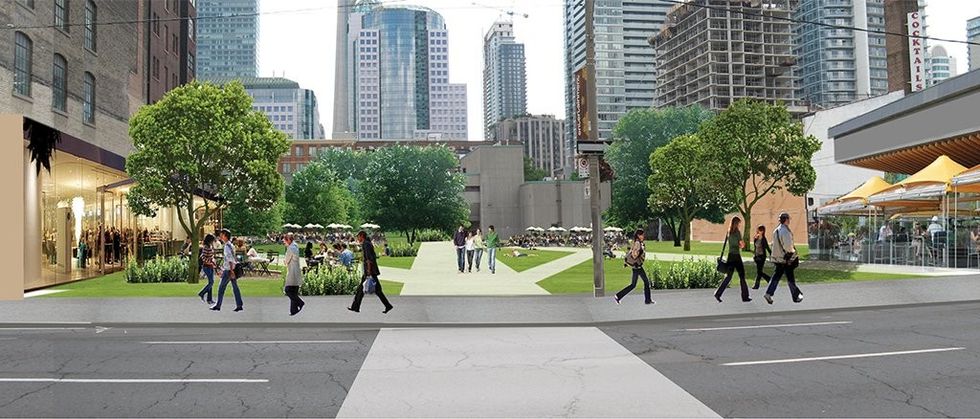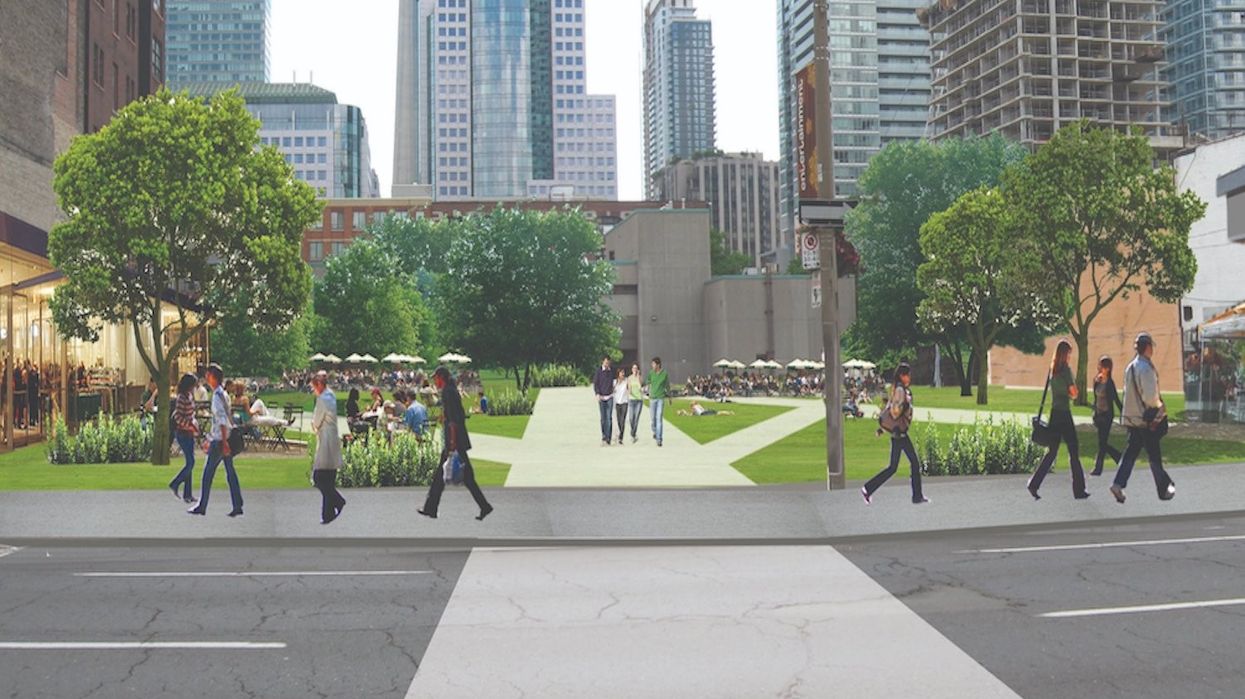In a dense city like Toronto, where the pandemic has forced residents to stay confined inside with a limit to outdoor interactions, access to public parks and greenspace is more prevalent than ever -- especially for those living in the heart of downtown.
On Friday, the City of Toronto announced its plans for a significant redevelopment in the downtown core and substantial investment in the livability and vibrancy of Toronto.
The development includes creating affordable housing, a new fire hall, a new EMS post, a community agency space, and a new public park.
In October 2019, City Council approved a staff recommendation to move forward with the disposition of the City-owned property at 260 Adelaide Street West, which currently is home to Toronto Fire Station 22, and to relocate the "ageing" fire station to a site to Metro Hall.
READ: The Future of Toronto’s Rail Deck Park Suddenly in Doubt
At that same meeting, Council also approved the acquisition of a privately-held property located at 229 Richmond Street West, which currently operates as a surface parking lot behind The Ballroom.
The CreateTO board of directors has adopted the proposed Master Plan for these properties, including how these sites can be activated with City uses.
The board also approved a joint venture with developer CentreCourt, which owns the adjacent property at 254 Adelaide Street West.
“This is an exciting project on many fronts and an extremely complex transaction involving multiple partners," said Mayor John Tory.
"It will address program needs for numerous City divisions and it will create a range of City-building opportunities, including the potential for affordable housing in the downtown core, addressing the state of good repair of City infrastructure, and the potential to create a new park, and an EMS facility – or other investments to be determined by City Council.”
By jointly developing 260 Adelaide with 254 Adelaide Street West, a larger podium and tower floorplate can be accommodated on-site, enabling the construction of a greater number of residential units -- approximately 652 in total, including a target of 30% affordable rental units.

By relocating the fire station into the south-facing podium of Metro Hall, the City will modernize the facility – at no cost to Toronto Fire Services. The move will also free up the Adelaide Street site for redevelopment, enabling the City to create a significant number of affordable housing units within a future residential development on the property.
The future podium of the Adelaide Street site will house a new EMS post, at no cost to Toronto Paramedic Services, and 10,000-sq.ft of community space.

The acquisition of the property at 229 Richmond Street West, currently a surface parking lot, will enable the City to create a much-needed 24,000-sq.ft public park -- funded by Parks, Forestry and Recreation -- in the rapidly growing area of the downtown core.
A below-grade parking facility, to be operated and funded by the Toronto Parking Authority, will also be included in the block plan.

Councillor Joe Cressy, Spadina-Fort York, says the public park has been a project five years in the making.
"This will be the first new large park in our downtown King-Spadina community in over 20 years. In that time, the population of the area has grown from just 230 residents to an estimated 44,000 people – when all the proposed development and construction is completed. We clearly need more greenspace and outdoor areas for people to exercise, enjoy, and explore," said Cressy.
Cressy said the new park would be comparable in size to Berczy Park.

“In the old days we would have spent millions of dollars to simply tear down and rebuild the Adelaide Fire Hall – the busiest fire hall in the country," said Cressy.
"Instead, we challenged ourselves to think differently about the value – and the opportunity – of our land. This is creative city-building at its best.”





















